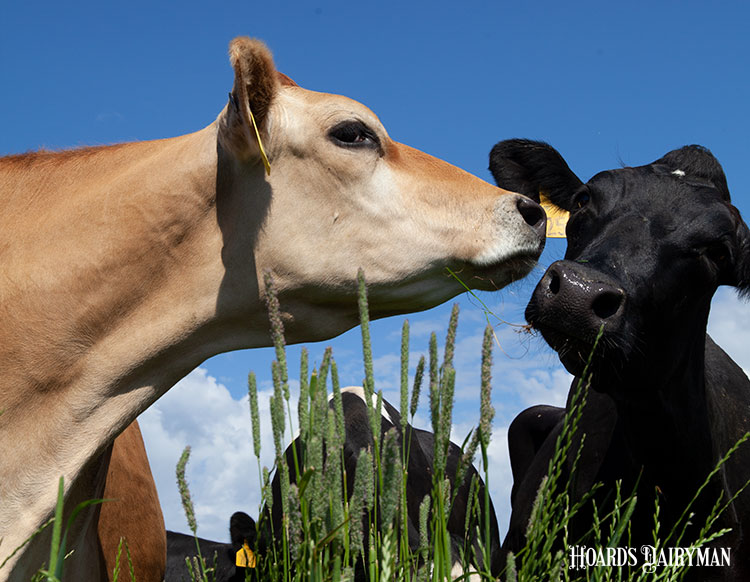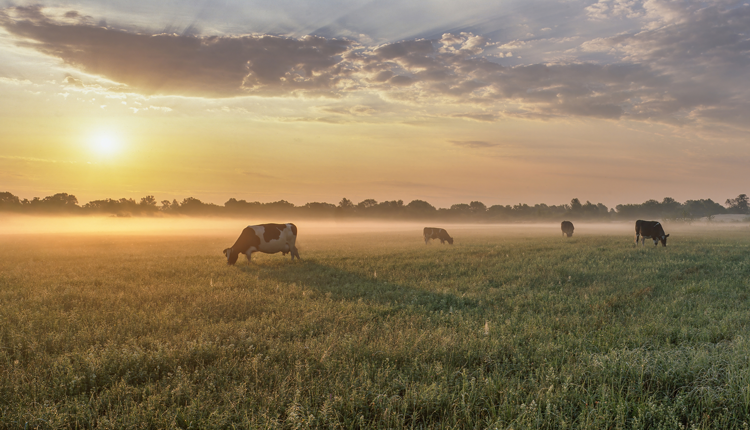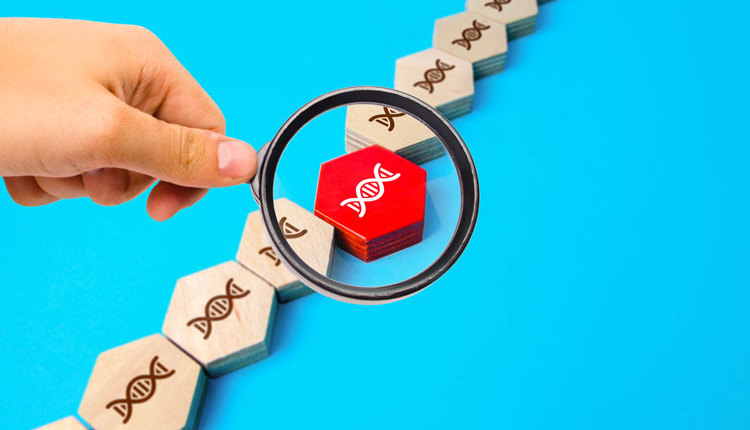
When it comes to on-farm sustainability practices, much of the focus is understandably on efforts to protect your land, water, and air.
What may get overlooked, however, is the important role herd health and performance can have on the environment while making good economic sense.
The new version of the checkoff-supported FARM ES program will incorporate herd health-related inputs and management changes for scenario analysis testing. Farmers will see the impact that reducing heat stress, for example, has on their greenhouse gas (GHG) footprint. This will factor in the number of fans and sprinkler systems that need to be added, the energy and water used, as well as feed intake, milk production, reproduction, and other health changes.
Additionally, work done through the Greener Cattle Initiative, which was founded in part by the Innovation Center for U.S. Dairy, is accepting grant proposals to award up to $4.67 million on research that could include herd-health outcomes.
Finally, scientists are measuring the impact of feed additives on enteric methane emissions as part of the Net Zero Initiative, and there is the opportunity to pair herd health information with these individual cow methane measurements.
In the meantime, here are five ways you can help assure a healthy herd and realize environmental gains that are profitable for the milk you produce.
1. Minimizing transition cow diseases offers an opportunity to reduce GHG emissions of your herd. Subclinical ketosis, a disease that often affects 15% to 30% of a herd, is associated with reduced milk production, greater likelihood of other transition diseases (displaced abomasum, metritis, and so forth), and higher risk of culling. Therefore, it is a costly disease from both an environmental and economic perspective. Subclinical ketosis elevates the carbon footprint per unit of milk by 2% per case and costs approximately $117 per case. When combined with other transition diseases that often accompany ketosis, the GHG impacts are exacerbated: GHG emissions per gallon of milk climbs by 6.9% for cows that also develop mastitis, 3.7% for cows that also develop metritis, 6% for cows that also develop a displaced abomasum, 3.4% for cows that also exhibit lameness, and 2.9% for cows that also develop clinical ketosis.
2. Reducing total lameness and specific causes of lameness will improve your herd’s GHG footprint. For every 1% reduction in overall herd lameness, herd GHG footprint falls by 1.5%. Lame cows also are costly, at $90 to $300 per case.
3. Improving the pregnancy rate in lactating cows and heifers is incredibly powerful in reducing your GHG footprint. Improving pregnancy rate (at 50-day voluntary wait period) from 19% to 25% reduces the total herd methane (the most prominent GHG on your dairy) emissions by 10%. This is equivalent to a $49 per cow per year gain in profitability. Raising heifers such that you enhance growth rates and breed at the optimum weight to decrease their age at first calving by two months (through improved nutrition and reproduction) reduces the heifer footprint by 30%. On average, we spend $2.50 per heifer per day to raise it from weaning to breeding, so this reduction is the equivalent of $150 per heifer in your herd. With an improved heifer rearing program, you will be able to optimize the size of your replacement herd, which will have further economic and GHG benefits.
4. Heat stress has been increasingly researched the past several years. We all are familiar with drops in milk production and reproduction associated with heat stress. Recently, data has shown that heat stress can have lasting effects on fetal heifer calves, impacting their future milk production and reproduction. However, did you know heat stress also impacts GHG emissions of your herd? Reducing the impacts of heat stress by 25% creates milk production and reproduction benefits and will lead to a 10% reduction in the methane produced per gallon of milk on your herd.
5. Minimizing clinical and subclinical mastitis are opportunities to reduce environmental impact intensity in your herd. Cows with clinical mastitis had a 6.3% high carbon footprint per unit of milk produced than cows without clinical mastitis. Gram negative infections, such as E. coli and Klebsiella, cause a greater rise in emissions than other causes of mastitis. Mastitis is costly on dairy farms, with the average fresh cow (more than 30 days in milk) case of mastitis costing $444; most of this cost is due to a greater likelihood of culling and future lost milk production. Subclinical mastitis also is costly. While the direct economic impact of subclinical mastitis can be noticed through lost premiums on your milk check, there also is a GHG impact. As the total bulk tank somatic cell count (SCC) climbs, the GHG emissions per gallon of milk produced on the herd also increases, at approximately 3% per 200,000 SCC increase.
While not as commonly discussed as capturing natural gas produced from an anaerobic digester or the prospect of feeding seaweed, these examples demonstrate the significant impact you can have on your emissions by continuing to prevent diseases and make management decisions that positively impact the health of your herd.
These opportunities exist for every herd and are actions you can take today to continue proving how dairy is a cornerstone of sustainable nutrition.







